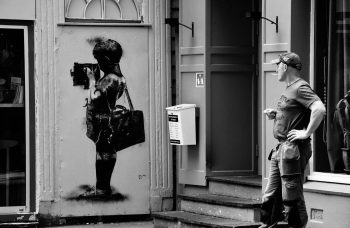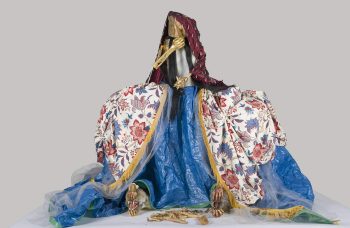As the centenary for women’s suffrage comes to a close, Tate announced the acquisition of four watercolours by Sylvia Pankhurst (1882-1960), a well-known artist and women’s rights campaigner. The 1907 paintings show images of apron-clad women working in Glasgow cotton mills and Staffordshire potteries. These are the first paintings by Pankhurst to be added to Tate’s collection.
Originally trained at the Manchester Municipal School of Arts and the Royal College of Art, Pankhurst played a vital role during the women’s suffrage movement. She used her artistic abilities to fight the battle with the Women’s Social and Political Union (WSPU) – organized by Pankhurst’s mother and sister in 1903 – designing badges, banners, and flyers. The year she painted the watercolours acquired by Tate, she travelled through Northern England and Scotland for several months visiting factories where women worked. She used her paintings to document the poor working conditions and extremely low wages women experienced. She studied, painted, and wrote about the women she met while living within the industrial communities. The writings and paintings she produced were later published in the London Magazine and Votes for Women, the WSPU journal.

Two of the acquisitions are from Pankhurst’s time in Glasgow where she observed women supervising milling equipment. The mill, according to Pankhurst, was almost ‘deafening’ and ‘oppressively hot.’ So hot, in fact, that Pankhurst recalled it to be ‘so hot and airless that [she] fainted within an hour.’ The other two paintings are of the women the artist met and observed working in Staffordshire pottery factories. Pankhurst was shocked to find that women were restricted to the unskilled jobs at the factories and were paid less than seven shilling per week. There, Pankhurst recorded the conditions saying ‘each [woman] was employed by the man she toiled for – the slave of a slave, [she] thought!’ In 1912, Pankhurst gave up art in order to fully dedicate herself to the suffrage campaign. She eventually founded the East London Federation of Suffragettes to specifically represent working-class women during the movement.
The paintings were acquired directly from the Pankhurst family for an undisclosed price. Funds for the purchases were put forth by the Denise Coates Foundation, a charity created by the founder and chief executive of the online betting firm Bet365, to commemorate the centennial. In Tate’s statement, Helen Pankhurst, granddaughter of Sylvia Pankhurst, said: ‘The family are delighted that some of Sylvia’s paintings are being acquired by Tate. Sylvia was an artist as well as a champion of working women’s rights, her first passion not as well-known as her second. In these beautiful pieces these interests are powerfully combined.’
Having remained in the family since they were created 111 years ago, the four paintings have rarely been exhibited. Earlier in the year, they were shown at Manchester Art Gallery and are currently on display at the Scarborough Art Gallery until January 6th. After they enter into Tate’s collection, they will be part of a recently announced rehang of Tate Britain’s permanent collection in 2020.





